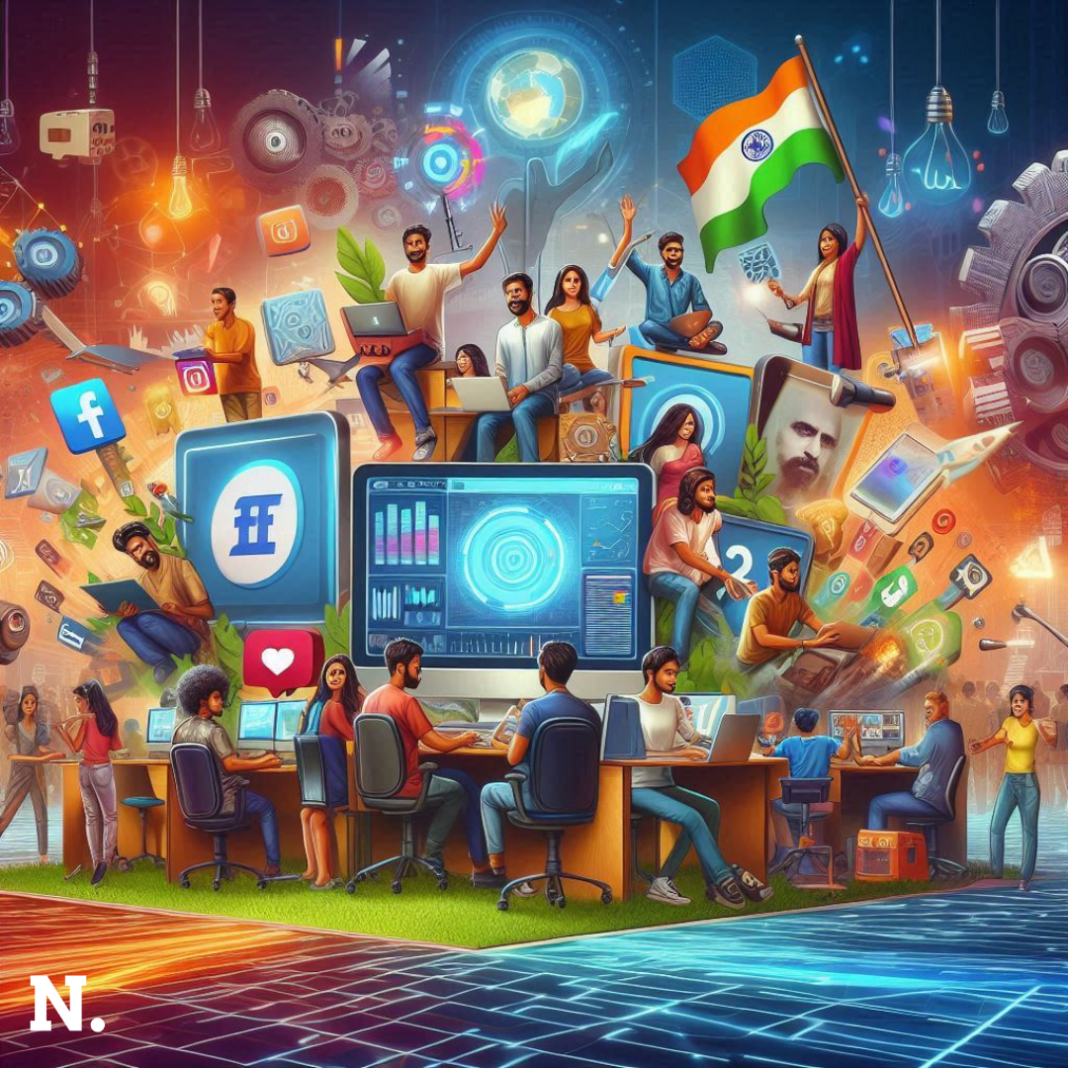The creative industry in India is undergoing a massive transformation, with new opportunities emerging for creators to shine globally. India will host the World Audio Visual & Entertainment Summit (WAVES) 2025 for the first time, highlighting the power of creators and exploring how they are reshaping the digital landscape. But what is driving the rapid growth of the Creator Economy in India, and how is it impacting the country’s financial environment? Let’s explore.
The Rise of India’s Creator Economy
India’s Creator Economy is rapidly growing, with over 8 crore creators, including vloggers, meme makers, musicians, and bloggers. Digital platforms have enabled them to showcase their talents, making India one of the largest markets for content creation. A YouTube report reveals that 83% of Indian Gen Z identify as creators, and over 90% have engaged in content creation recently. In 2021, YouTube alone contributed ₹10,000 crore to India’s GDP, creating over 7.5 lakh jobs.
The WAVES summit in 2025 will provide a platform to highlight India’s potential as a global hub for creative talent. As the number of creators’ increases, many are not just seeking recognition but also building businesses, driving economic growth in the process.
Emerging Trends in India’s Creator Economy
The growth of the Creator Economy in India has led to several emerging trends that are reshaping creators’ ways of creating, sharing, and monetizing content. Let’s look at some of these trends:
Meme Marketing
Memes have quickly become a serious form of marketing in India, and businesses are jumping on the bandwagon. Memes are short, funny, and relatable pieces of content that go viral across social media platforms. They have become an important tool for brands to engage with younger audiences. According to reports, the meme marketing industry in India is set to reach ₹3,000 crore by 2025.
What makes memes so effective? One reason is that they are simple to create and very shareable. They are 2.5 times more likely to generate user interaction than traditional content. This makes memes an essential marketing tool for brands like Zomato and Netflix, who use them to keep their audience engaged in a lighthearted way. In fact, a study by Redseer showed that Indians spend an average of 30 minutes a day consuming memes. For businesses, this trend presents an opportunity to reach a massive audience quickly and cheaply.
Creators Becoming Entrepreneurs
Many content creators in India are not stopping at just creating content. They are using their influence to launch businesses and build new income streams. By capitalizing on their large fanbases, these creators are becoming entrepreneurs, offering products and services that appeal to their followers. This trend is expected to grow rapidly in the coming years.
For example, creators like Sanjyot Keer, who has millions of followers on social media, have launched their own businesses. Sanjyot, for instance, launched a brand called YFL Home, which focuses on selling home and kitchen appliances. He partnered with House of X, another business founded by content creators, to bring his entrepreneurial vision to life. This shift from content creation to entrepreneurship is opening new doors for creators to earn a steady income while diversifying their income sources.
Long-Form Content Is Making a Comeback
While short-form content, such as quick TikToks or Instagram Reels, has been the dominant trend in recent years, long-form content is experiencing a revival. Web series, talk shows, and documentaries are seeing increased demand, and even traditional streaming platforms like Netflix, Amazon Prime Video, and Disney+ Hotstar are creating original shows featuring popular creators.
Shows like ‘Taaza Khabar’ by Bhuvan Bam on Disney+ Hotstar and ‘Mismatched’ by Prajakta Koli on Netflix have received positive feedback from viewers. These long-form pieces of content not only showcase the creator’s talent but also keep audiences engaged for longer periods of time. Subscription-based models are also growing, where creators offer exclusive content to paying subscribers. For instance, Samay Raina’s “India’s Got Latent” show has been able to generate income by providing behind-the-scenes access to fans willing to pay for more content.
The Role of AI Influencers
India’s creator economy is not just about human creators. In recent years, AI-generated influencers have begun to carve out a niche in the market. These influencers, created using artificial intelligence, are being used by brands to promote products and engage with audiences in new ways. Some well-known virtual influencers in India include Kavya Mehra and Naina, who have been making waves in the digital space.
Although human influencers still dominate in terms of popularity and revenue, AI influencers are catching up. They are being used to create futuristic and interactive content that resonates with tech-savvy audiences. According to research, while human influencers currently out-earn their AI counterparts by an average of 46 times, virtual influencers are growing in popularity. Projections suggest that the market for AI influencers will grow significantly and could reach $37.8 billion by 2030.
India’s Creator Economy is rapidly transforming, bringing new opportunities for creators and businesses alike. The growth of content creation, fueled by trends like meme marketing, entrepreneurship, and long-form content, is reshaping the country’s digital and economic landscape. As the WAVES Summit approaches, India is set to take center stage on the global map, showcasing its incredible potential as a leader in the world of content creation.





